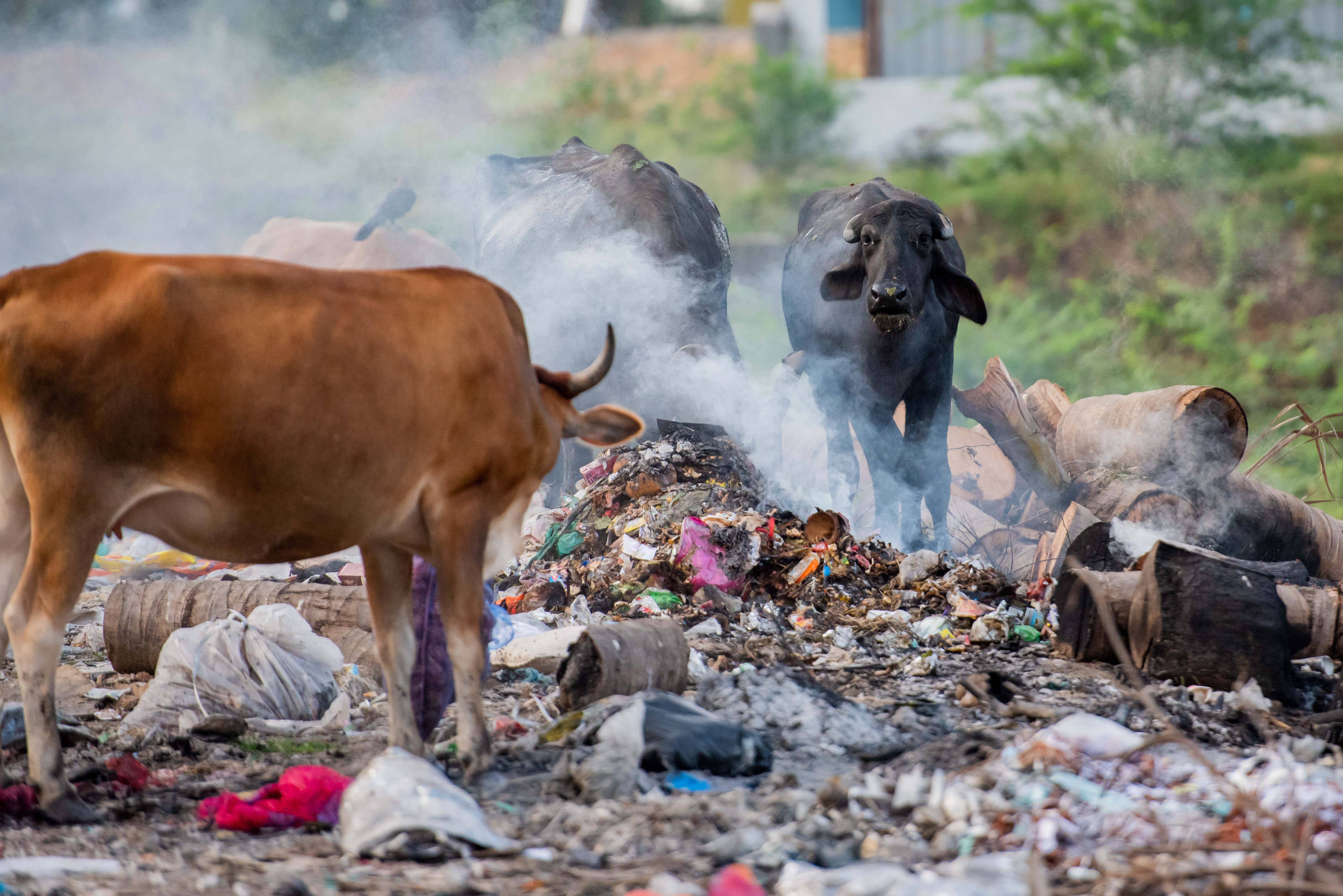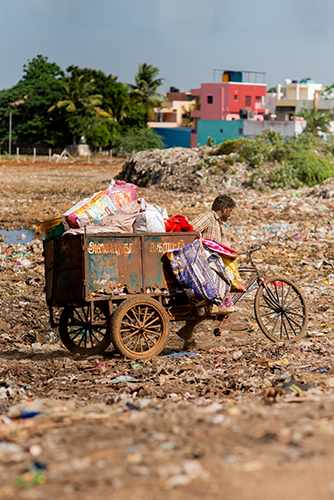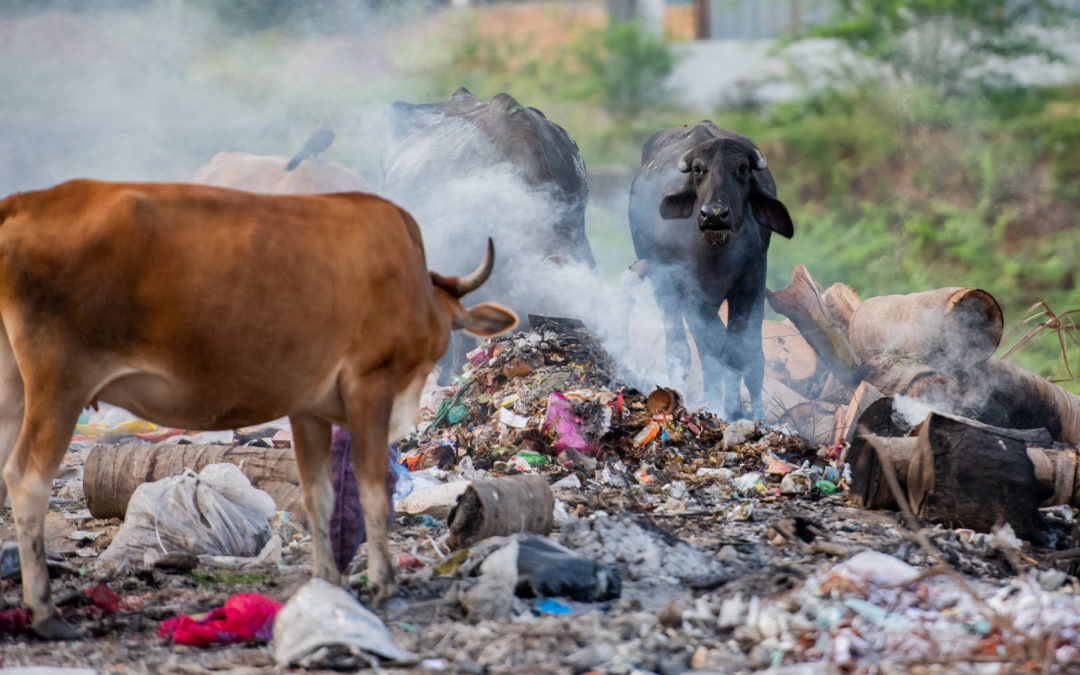Welcome to the first of my two-part series on waste management in India. This week, we’ll explore the challenges. In the next part, on Oct. 21, we’ll explore some of the work being done to address them. This article originally appeared in our Circularity Weekly newsletter. Subscribe here.
There was a time, not so long ago, when I naively believed that governments could, no matter their level of dysfunction, provide basic services to their citizens. You all likely already know this, but I was wrong. These government failures have been in the news lately from the egregious (the Jackson, Mississippi water crisis), to the intermittent and frustrating (California’s energy restrictions during the recent heat wave), to the chronic (India’s inability to collect and manage its citizens’ waste).
The last, chronic failure has been on my mind a lot these last few weeks. I was fortunate enough to join rePurpose Global in September on its first “Plastics Reality Project” experience in Southern India. Let me start by saying that the people of Tamil Nadu and Kerala are some of the most welcoming I’ve met. If you have a chance to visit, the region is beautiful in so many ways.
The situation on the ground
Let’s start by acknowledging two things I think we all know:
- The invention of fossil-based plastics has brought with it many technological advancements that the global population relies on every day
- Plastic does not belong in nature
One major challenge is that we have not figured out how to make, use and cycle plastics in a sustainable way that keeps them out of nature. Our inability to address the plastic waste challenge in the Global North has led to massive problems in other parts of the world.
They are being consumed by their own consumption.
This challenge had not been as clear to me as it was when I arrived in Chennai, Tamil Nadu, India. This city of nearly 5 million (sixth largest city in India) has trash on nearly every corner. It lines the streets, covers the banks of rivers and blows in the wind.
The plastic problem starts with consumerism and convenience, and ends with mountains of plastic waste in places such as India that bury informal waste pickers alive (see here and here) and catch fire spontaneously (see here and here). According to the United Nations Environment Programme, about 85 percent of all plastic ends up in landfills, incinerators, informal dump sites or the environment. I think Aditya Siroya, co-founder and chief impact officer at rePurpose, put it best when he said this of the cities in his home country, “They are being consumed by their own consumption.”
At this point in the piece, I was going to throw a number of statistics at you meant to hammer home how real the challenge is. The world produces [insert large number] millions of tons of plastic waste, some [slightly lower number of] millions of tons goes into the oceans, and so on. I’ve decided not to do that, however, because I think what I learned and saw on the ground in Southern India tells the story better. Instead, I’m going to write this piece from the point of view of my senses while I was on the ground in Chennai and Kozhikode.
If you read to the end, I’ll point you to a small number of sources where you can nerd out on data all you want.
The sights
So many sights are burned in my memory from just our first full day in Chennai. The traffic, the people, the stray dogs, the trees and the amazing food served in the most elaborate dishware. The one image that will stick with me forever, though? Cows and water buffalo in the middle of a city of more than 5 million people, eating trash.

![]()
Maybe it was the Minnesota farm kid in me, but this sight hit me very hard. What I quickly learned, though, is that it’s not uncommon to see images like this in Chennai. Nevertheless, as the trip went on, every time I saw a cow eating trash, it felt like a gut punch. You can tell when visiting that no one is OK with this, but it is the painful reality of a place where waste management is not sufficient and where the plastic crisis has fully set in.
The sounds
Few things can prepare you for the barrage of sounds in one of India’s big cities. The traffic (especially the horns) and the hum of people on the move is omnipresent.
The sounds I will remember most are the voices of the people we spoke to in the informal waste sector. These are the people on the front lines trying to keep any material with value from dying a very slow death in a dump site or being burned in an illegal burn pit.
We were able to speak with one man who until very recently was a farmer. When drought hit and the work dried up with it, he relocated his family to Chennai because he knew there was enough money in waste picking to survive. He told us how he spends 12 hours a day, at least six days a week, collecting glass bottles to sell to recyclers. It is backbreaking, dangerous work that garners little respect from society. The story could have very well sounded dire, but the overwhelming sense from this man that there was hope and value in the work he did made it sound almost triumphant.
What do you do when consumption is consuming your city?
We also heard a different perspective from our visit to a second dump site. The women we spoke to there had come to the dump site as the last hope of pulling any material of remaining value from the piles of waste that had already been picked over by countless individuals. Their job there was to take mixed waste and sift it multiple times through large drums to sort anything that could be sold and ultimately collect compost from the pile that could be used in farming. They lived in a small makeshift village on the edge of the site and told us how they had refused offers for different accommodations because they knew their work in the place would be short-lived, and then it would be time to move onto the next site that needed to be remediated. Their story left me with a feeling of endlessness for the people working these jobs in the informal sector.
The smells
There are very few places in India where you won’t smell something amazing. It may be the cooked food and fresh fruits, or any number of things that draw you in. I fell in love immediately with the constant inundation of my olfactory receptors.
That was until we visited our first open dump site. The location we visited was originally intended as a transfer station. Trucks picking up waste from households and businesses in the surrounding area would bring their loads of waste there, dump them, and then larger trucks would load that waste and take it to a more formal site. Unfortunately, that was not the reality on the ground. Because of the inconsistency and failure of the local authorities, the waste piled up at the site for years.
Now might be a good time to draw a distinction between a landfill and a dump site.

![]()
A landfill, by definition, meets certain environmental criteria, is generally located a safe distance from residential areas and bodies of water, and maybe most important, is built to contain run-off and leachates so the pollution does not escape into the environment. A dump site, on the other hand, has none of the features in most cases. The dump site we visited was in the middle of a residential neighborhood, very close to a school and adjacent to a small lake. Waste was simply piled on an open plot of land. For an in-depth review of some issues related to these dump sites, you can check out this article from the International Journal of Environmental Research and Public Health.
The feels
I must admit that at the end of the first two days in Chennai, I was ready to throw in the towel on the whole human experiment. At that point, I felt like I had seen enough. The scale and the severity of the problem seemed an insurmountable challenge.
That was, of course, until I realized two things:
- This is a relatively short-lived problem in the scope of human history. Plastics have only been around in their current form for less than a century, and they found their way to India even more recently. With that in mind, it is possible to imagine a scenario where the problem could be cleaned up almost as quickly as it was created. That gave me hope.
- A lot of very smart, very passionate people are working to solve the plastic waste problem.
More on No. 2 in my next newsletter.
To view some wild statistics about our current plastic waste problem, check out these sources:
If you’d like to read the original source of this article please click here Visit Source

